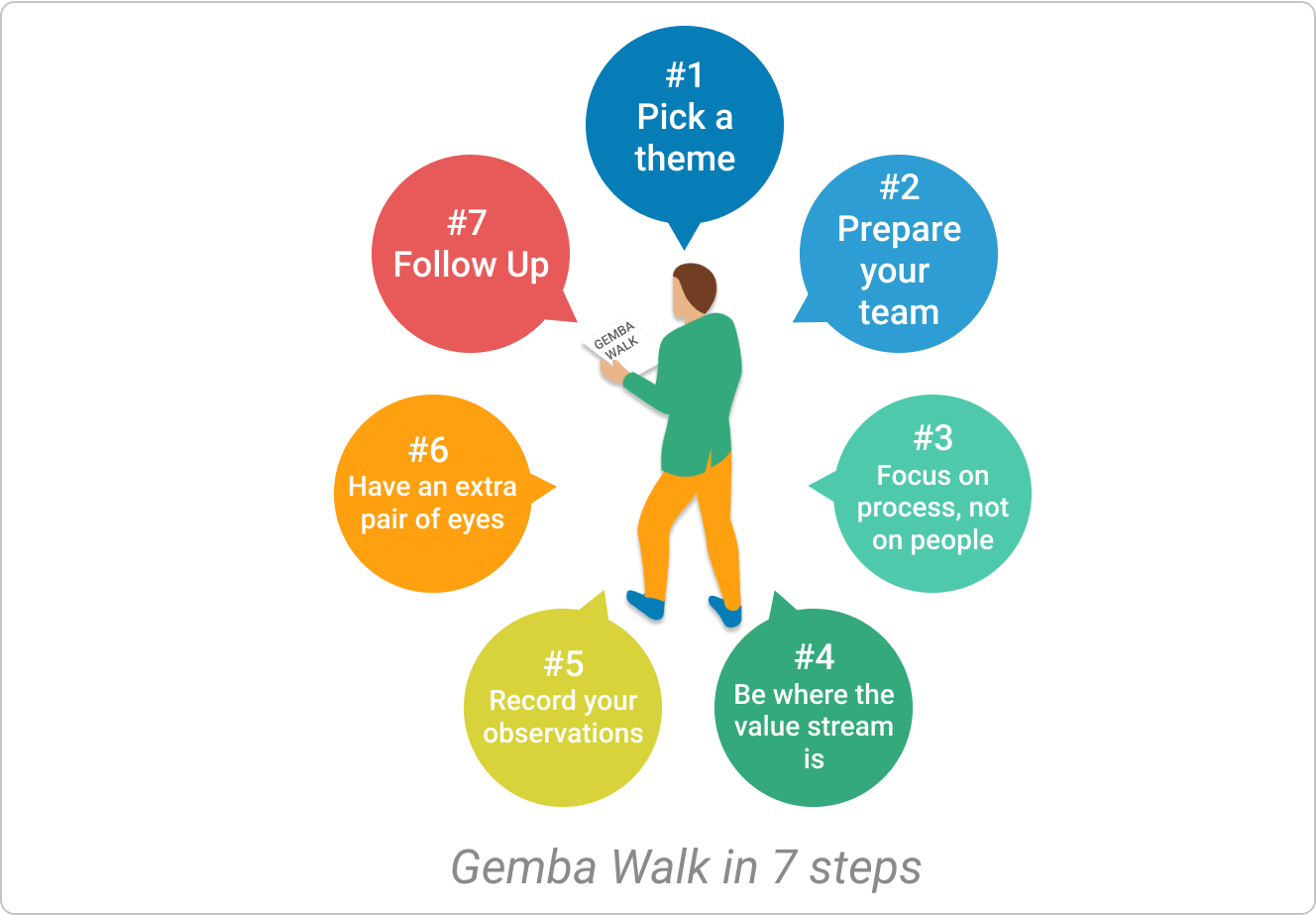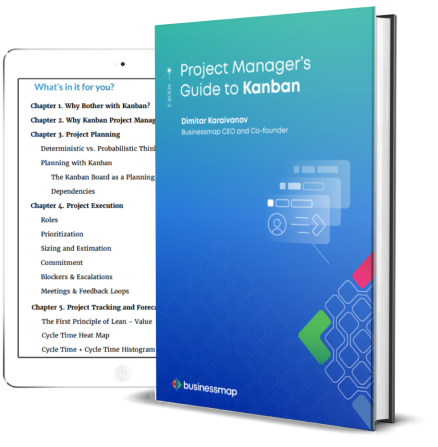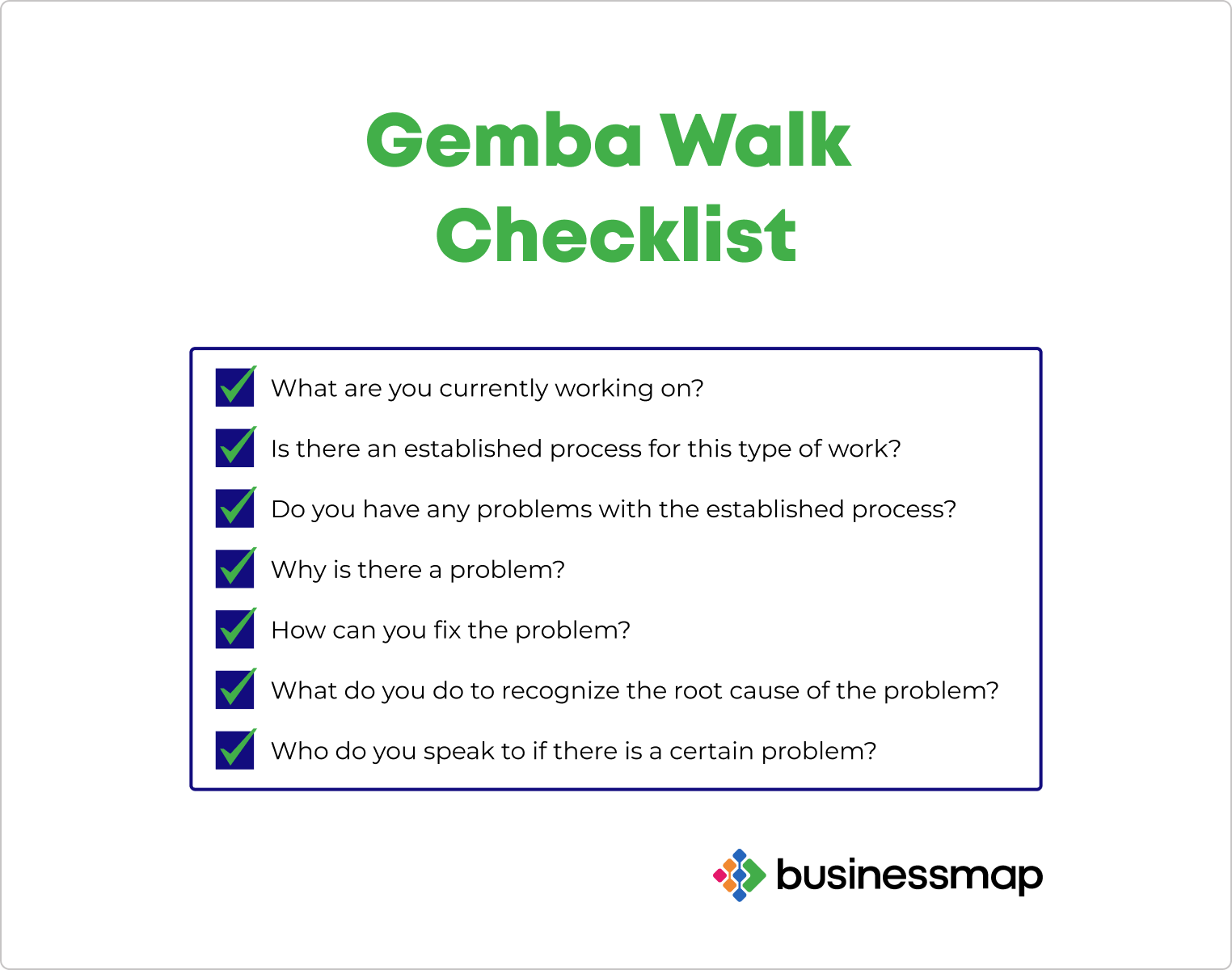Key Takeaways
-
What is a Gemba Walk? A Lean practice of going to the "real place" (Gemba) to observe, learn, and improve processes directly.
-
Why does it matter? It fosters frontline insight, builds trust, and supports faster, grounded process improvements.
-
What tools help? Gemba walk checklists, collaboration boards, PDCA.
-
What's the success factor? Being present, respectful, and focused on process, not people.
What Is a Gemba Walk in Lean and How Does It Work?
A Gemba walk is a foundational Lean management practice where leaders visit the actual place where work occurs ("Gemba") to observe processes, engage with employees, and identify opportunities for improvement. The term comes from Japanese, meaning "the real place."
In manufacturing, that's the factory floor. In tech, it's the developer's workspace. In customer service? It's wherever the customer interaction happens.
Rather than relying solely on reports or KPIs, leaders use Gemba walks to see firsthand how work is done. The core goals are to build mutual trust, understand workflows, and uncover inefficiencies that might be missed from afar.
Why Are Gemba Walks Important for Continuous Improvement?
Gemba walks connect leadership to the actual work and frontline insights. This direct observation is key to:
- Uncovering the root causes of problems
- Strengthening cross-functional communication
- Driving meaningful, lasting improvements
- Reinforcing a culture of collaboration, not blame
By focusing on the process - not the people - teams stay engaged and empowered.
Key Elements of Gemba Walks
Go and see
The primary objective of the Gemba walk is for managers and leaders at every level to take regular walks around the shop floor and to actively participate in identifying wasteful activities.
Ask why
A Gemba walk's primary objective is to thoroughly explore the value stream and identify its problematic areas through active communication. A good leader is always eager to listen rather than talk. Here is why you may use different techniques such as 5 whys in order to identify problematic parts of the process.
Respect people
Keep in mind that a Gemba walk is not a "boss walk". Pointing fingers and blaming people is exactly what you don't have to do. You are not there to judge and review results. You are there to collaborate with the team and find problems together. Try to focus on identifying the weak points of the process, not the people.
What Are the Seven Steps of a Gemba Walk?
The effectiveness of your Gemba walk hinges on preparation and focus. Here's how to walk with purpose by following these core steps:
1. Pick a Theme
Each walk should have a specific focus, such as safety, quality, or efficiency. This sharpens your observations and ensures the walk supports larger business goals. Prepare a list of related questions to guide your discussion.
2. Prepare Your Team
Inform the observed team that this isn't an evaluation but a joint improvement exercise. Clear expectations foster openness and reduce defensiveness, which is crucial for gathering honest insights.
3. Focus on the Process, Not People
The walk should spotlight workflows, not individuals. Avoid evaluating personal performance. Instead, look for bottlenecks, inconsistencies, or systemic inefficiencies.
4. Be Where the Value Stream Is
Follow the flow of work through its critical path, where value is created for the customer. This allows you to identify waste, delays, or interruptions more effectively.
5. Record Your Observations, Don't Make Suggestions During the Walk
Take detailed notes or photos, but resist the urge to solve problems on the spot. Analyze your findings later with the full context in mind.
6. Bring an Extra Pair of Eyes
Consider inviting someone from another team or department. A fresh perspective can lead to unexpected questions and observations.
7. Follow-Up
Close the loop with a post-walk meeting. Share what you learned, involve team members in analysis, and use tools like PDCA cycles to drive improvements. Transparency builds trust and reinforces the walk as a learning, not surveillance, activity.

10 Years Kanban Experience In 1 Free Book.
Project Manager's Guide to Kanban
What Questions Should Be Asked During a Gemba Walk
Your checklist should align with the goal of the Gemba walk. Some common and effective questions include:
- What is the purpose of this task?
- Where do delays or bottlenecks occur?
- Do you have the necessary tools and information?
- What ideas do you have to improve this process?
- What wastes (waiting, motion, defects, etc.) can you spot?
Tailor your questions by category: problem-solving, tools, flow, collaboration, safety, etc.

How Gemba Walk Checklists Help Identify Inefficiencies
A well-designed Gemba walk checklist ensures:
- Focused observation tied to strategic goals
- Consistent evaluation across teams or shifts
-
Quick documentation of actionable insights
- Easy comparison between current vs. ideal states
Checklists are especially useful when paired with visual Lean techniques, such as value stream mapping or digital Kanban tools.
Post-Walk: What to Do After Your Gemba Walk
The Gemba walk isn't finished when the walk ends. Post-walk analysis is where insights become action.
- Review findings with leaders and frontline contributors
- Use PDCA to guide improvement experiments
- Follow up with observed teams to share feedback and outcomes
- Document changes and update processes accordingly
You can even hold a Gemba Kaizen Circle, a cross-functional meeting that leverages different perspectives to decide on improvement actions.
Real-Life Example: Applying Gemba to Improve Response Time
Imagine you're getting frequent complaints about your support team's response time. Instead of scheduling more meetings, you do a Gemba walk:
- You visit the team's workspace.
- You observe workflow bottlenecks.
- You ask frontline agents what's slowing them down.
- You gather data and identify inefficient handoffs.
- You use PDCA to test a new triage process.
Result? Improved response time, fewer complaints, and a team that feels heard.
Start Walking, Start Improving
Gemba walks transform improvement from theory to practice. When leaders show up at the frontline with curiosity and respect, change becomes a shared responsibility.
Businessmap is the most flexible software
to align work with company goals











